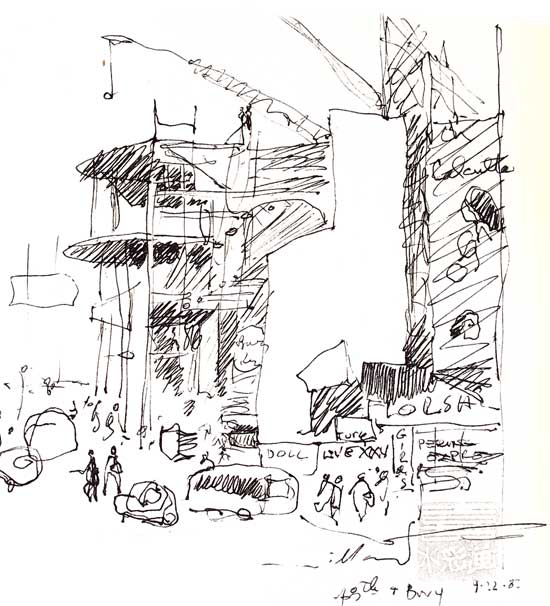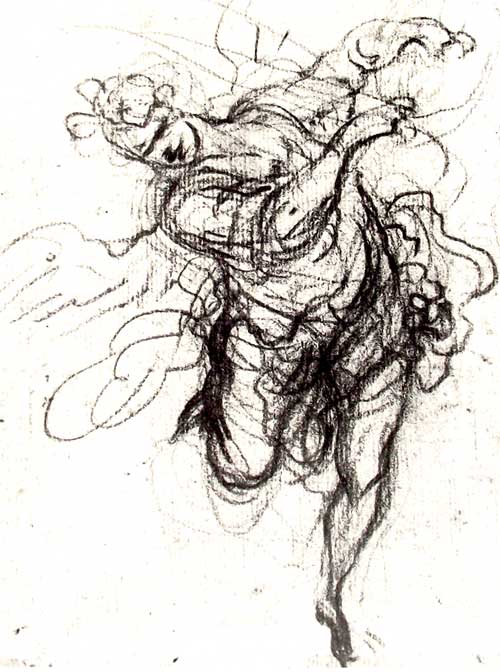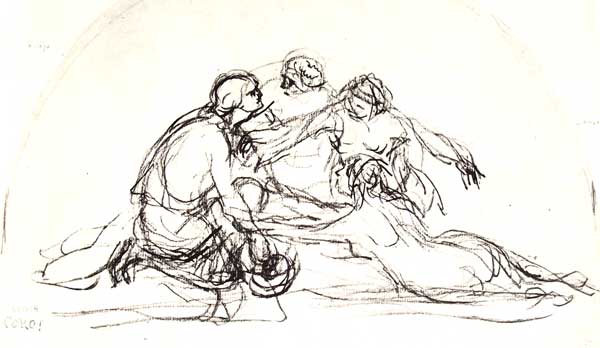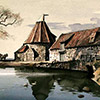There are three classic types of creative drawing: Line art, Gesture drawing and Modeling.
The drawing is the opposite gestural line drawing, where we´ll search to make a line accurate after a detailed observation of the model.
However, the objective of gestural drawing is not to capture the geometry of the model but its movement. The objective is to capture this movement, that is, the rhythm or gesture, as quickly as possible with our hands. That´s the reason why a gesture drawing is an expression of the artist’s first reaction to the issue.
Unlike the line drawing that is very analytical, in the drawing gesture we´ll search simplicity and fluency in the drawing.
Example of gestural drawing, a sketch of David Millard of a street with people, cranes, traffic.
Hustle on the streets, by David Millard.
Lines with movement
Conseguir la espontaneidad no es fácil. Hay que captar la esencia de un gesto casi instantáneo.
To draw, we will choose sensitive soft materials such as charcoal, soft lead pencil or pen, as it does not provide much pressure and stain the paper easily. You have to let the hand, arm and your whole being agile, to respond to the subject is drawn.
Do not stop to play details, forms and profiles: let the pencil to slide along the paper, following the motion of the model.
* Remember that this is not to draw the model, but the action is taking place. It tries to capture the rhythm of the body and limbs of a figure, the wavy curve of a cloud, or the movement of some trees blown by the seeing.
Each subject has a kind of inner vitality, something closer to the feeling that to the appearance. This is what we must reflect with the gesture drawing. A subject is able to generate the sensation of movement through gesture drawing.
The hustle and bustle of the streets of a city like the one in the drawing is created with doodle-like drawings, but they will compose the scene. The quick strokes suggest the hurried movement. The flowing lines rise buildings up to the sky.
Get the spontaneity is not easy. We must capture the essence of a gesture almost instantaneous.
Figure drawing
Often we draw figures too rigidlyand therefore not look like a living being. We must learn to draw the lines loose and fluid to transmit the sensation of movement. In general, exaggerated in the drawing the gesture or figure´s action, we´ll find a result closer to what we see.
The study and drawing of figures dancing is a great exercise to start testing this type of technique or drawing.
To learn how to draw wavy and rhythmic lines that look like they are jumping on the paper. Lines into and out. Repeated lines following the motion and lines that vanish by the passage of energy.
The drawing gesture is also used to create ideas on different compositions. We begin first by fitting the shapes with smooth lines and we continue developing the compositional structure. At last, we mark more the last lines.
In this example Corot created the composition fitting several figures. And he ended adjusting the final composition in the same drawing:
We can asked a friend to pose changing position every two minutes. Limited time force us to develop speed, to capture the essence of the gesture and make a picture more expressive. We must concentrate on specific aspects of each position (a form, a gesture) and sketch them, overlaying a sketch to another in the same paper..
Objective: To develop a sense of rhythm and motion with every form.
It is ideal to make the gestural drawing with a sketchpad and a 6B pencil.




